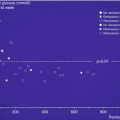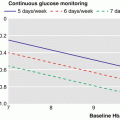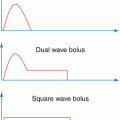Fig. 8.1
The healthy plate teaches to organise daily food in a balanced and varied diet. The healthy plate may be organised according to age, sex, level of physical activity and the food preferences
Because of the complexity of nutritional issues, it is essential that the whole diabetes team is aware about nutrition therapy and supportive of the person with diabetes, especially if lifestyle changes are needed. This means that a ‘diabetic’ diet does not exist. What we can offer our patients is a dietary prescription based on nutrition assessment of each patient and his/her treatment goals.
Nutrient (macro and micro) requirements of children and adolescents with type 1 diabetes are similar to ones of peers [2, 12]. If well educated, they can live without dieting (especially without forbidden foods).
Teaching patients with diabetes to eat with their family seems to favour more regular meals, healthier dietary habits and better glycaemic control [21, 22].
Simple general recommendations are as follows:
Do not skip meals: even distribution of food helps prevent high and low blood glucose.
Eat three meals a day, plus snack as needed: eating at regular intervals helps to control hunger and prevents overeating at the next meals.
Include carbohydrates in every meal and snack, and be sure to spread your carbohydrate intake evenly throughout the day.
Eat a well-balanced diet with a variety of food at each meal.
Start the meal with vegetables (that are filling and nutritious and prevent blood glucose rise).
Food containing carbohydrate from whole grains, fruits, vegetables and low-fat milk should be included in a healthy diet.
8.7 Glycemic Index
Apart these consensuses, still few controversial issues remain, among them, the efficacy of glycaemic index in diabetic meal planning. A Cochrane review [23] assessed randomised controlled trials of 4 weeks or longer that compared a low glycaemic index, or low glycaemic load, diet with a higher glycaemic index, or load, or other diet for people with either type 1 or 2 diabetes mellitus, whose diabetes was not already optimally controlled. Eleven relevant randomised controlled trials involving 402 participants were identified. There was a significant decrease in the HbA1c; the weighted mean difference was −0.5 %. No study reported on mortality, morbidity or costs. The Cochrane concluded that a low glycaemic index diet can improve glycaemic control in diabetes without compromising hypoglycaemic events. However, some authors disagree with these conclusions and claim no or very limited benefit of a low glycaemic index diet [24].
8.8 Micronutrients
Another controversial issue is about micronutrients (vitamins and minerals) supplementation in people with diabetes (compared with the general population) without underlying deficiencies. An antioxidant diet significantly improved endothelial dysfunction when supplemented with alpha-lipoic acid, unlike diet with placebo or controls [25]. However, routine supplementation with antioxidants, such as vitamins E and C and carotene, is not advised because of lack of evidence of efficacy and concern related to long-term safety.
Conclusions
In conclusion, goals of medical nutrition therapy are (1) to attain and maintain optimal metabolic outcomes; (2) to prevent and treat chronic complication of diabetes, modifying nutrient intake and lifestyle; (3) to improve health through healthy food choice and physical activity; and (4) to address individual nutritional needs, considering personal and cultural preferences and respecting the individual’s wishes [26].
Effective guidelines for nutritional recommendations exist. Unfortunately, even if few and scanty, published data show that recommendations are not always fulfilled. Educating patients is a crucial point of the treatment. Simple and effective tools to help patients and their families to behave with their meal plans and dietary habits are needed.
All you need is love. But a little chocolate now and then doesn’t hurt. [26]
― Charles M. Schulz
References
1.
2.
3.
Hockaday TDR (1981) Should the diabetic diet be based on carbohydrate of fat restriction? In: Turner M, Thomas B (eds) Nutrition and diabetes. Libbey, London, pp 23–32
4.
Ramachandran A, Viswanathan M (1997) Dietary management of diabetes mellitus in India and South Asia. In: Alberti KGMM, De Fronzo RA, Zimmet P (eds) International textbook of diabetes mellitus. Wiley, Chichester, pp 773–777
Stay updated, free articles. Join our Telegram channel

Full access? Get Clinical Tree






